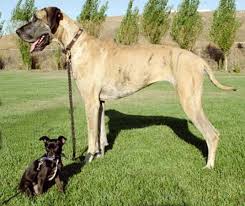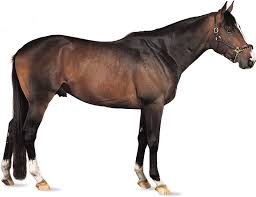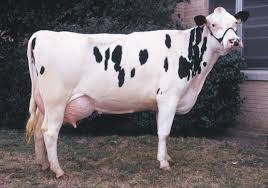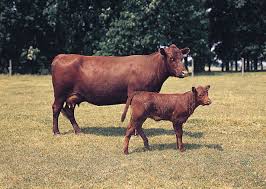Selective breeding is a fundamental method in animal breeding aimed at enhancing desired traits within a species. This practice involves choosing specific animals with particular characteristics to mate, thereby increasing the likelihood that their offspring will inherit those traits.
The primary goal is to improve desirable qualities, such as growth rate, disease resistance, temperament, and productivity, which are crucial for agricultural success and animal husbandry.
Historically, selective breeding has been practiced for thousands of years, dating back to the domestication of animals.
Early farmers noticed that certain animals produced better yields or exhibited more favorable traits, leading them to selectively mate these individuals.
Over time, this method has evolved with advancements in genetics and animal science, allowing breeders to make more informed decisions based on the genetic potential of animals.
In selective breeding, traits can be categorized as qualitative or quantitative. Qualitative traits, like coat color or patterns, are typically influenced by a single gene, making them easier to select for.
On the other hand, quantitative traits, such as milk production in cows or weight gain in pigs, are influenced by multiple genes and are more complex to breed for.
Modern techniques, including genetic testing and performance records, have enhanced the effectiveness of selective breeding.
These tools help breeders identify the best candidates for reproduction based on their genetic makeup and performance metrics. While selective breeding offers numerous benefits, it is essential to approach it carefully to avoid potential issues like reduced genetic diversity or the unintentional propagation of undesirable traits.
Selective breeding remains a vital strategy in animal agriculture, driving improvements in livestock and companion animal populations worldwide.
History and Development of Selective Breeding

Selective breeding has its roots in ancient agriculture, where early humans began domesticating animals for various purposes.
The practice dates back over 10,000 years, with evidence of selective breeding in livestock such as sheep, cattle, and pigs. Ancient civilizations, including the Mesopotamians and Egyptians, recognized the value of breeding animals with desirable traits for food, labor, and companionship.
The modern understanding of selective breeding emerged in the 18th century with the work of pioneers like Robert Bakewell, who is often credited with developing systematic breeding practices in livestock.
Bakewell’s innovative methods significantly improved the quality of sheep and cattle in England, laying the groundwork for contemporary selective breeding.
In the 19th century, Charles Darwin’s theory of natural selection further influenced breeding practices, highlighting the importance of inheritable traits.
As scientific knowledge progressed, especially with the discovery of genetics by Gregor Mendel in the mid-19th century, breeders began to apply these principles to enhance desired traits in animals.
The development of pedigree record-keeping and performance testing in the 20th century allowed breeders to make more informed decisions based on genetic potential, advancing the field of selective breeding.
Principles of Selective Breeding
Selective breeding operates on several key principles:
1: Trait Selection: Breeders identify and select specific traits to enhance, such as size, growth rate, fertility, or disease resistance.
2: Genetic Variation: Breeding requires a population with genetic diversity, allowing breeders to select the best candidates for desired traits.
3: Mating Strategy: Careful mating strategies, such as inbreeding and crossbreeding, are employed to concentrate desired traits or introduce new genetic material.
4: Performance Records: Keeping accurate records of an animal’s performance helps inform breeding decisions, enabling breeders to choose animals with proven traits.
5: Environmental Factors: Recognizing the influence of environment on traits, breeders often consider factors like nutrition and housing when selecting breeding stock.
Read Also: Breed Characteristics of Rabbit
Advantages of Selective Breeding

Selective breeding offers several advantages, including:
1: Improved Traits: It allows for the enhancement of desirable characteristics in animals, such as increased milk production in cows or faster growth rates in meat animals.
2: Disease Resistance: Breeding for disease resistance can lead to healthier animals, reducing the need for veterinary interventions and improving overall animal welfare.
3: Enhanced Productivity: Selectively bred animals can contribute to higher productivity in agricultural systems, leading to increased food supply and economic benefits for farmers.
4: Specialization: Breeders can create specialized breeds tailored for specific purposes, such as working dogs, show animals, or livestock suited for particular climates.
Disadvantages of Selective Breeding
Despite its benefits, selective breeding has notable disadvantages:
1: Reduced Genetic Diversity: A focus on specific traits can lead to a decline in genetic diversity, making populations more susceptible to diseases and environmental changes.
2: Unintended Consequences: Selective breeding can inadvertently lead to the propagation of undesirable traits, such as health issues in purebred animals, if not managed carefully.
3: Ethical Concerns: There are ethical considerations surrounding selective breeding, particularly regarding animal welfare, as certain traits may be prioritized at the expense of the animal’s health and well-being.
4: Costly Practices: The processes involved in selective breeding, including testing and maintaining detailed records, can be expensive and time-consuming for breeders.
Steps Involved in Selective Breeding
Selective breeding involves several systematic steps to ensure successful outcomes. The main steps include:
1: Identify Goals: Breeders begin by defining specific goals, such as improving growth rate, fertility, or disease resistance in a particular species.
2: Select Parent Animals: Breeders choose parent animals that exhibit the desired traits. This selection may involve analyzing performance records, health history, and genetic background.
3: Mating Strategy: Depending on the goals, breeders may decide on an appropriate mating strategy, which can include inbreeding (mating closely related animals) or crossbreeding (mating unrelated animals).
4: Monitor Offspring: Once the mating occurs, breeders monitor the offspring to evaluate the expression of desired traits. This may include measuring growth rates, health, and other performance indicators.
5: Evaluate and Select: After assessing the offspring, breeders select the best individuals to become the next generation of parents. This selection is based on the performance and genetic potential of the animals.
6: Repeat Process: The selected animals are then mated again, and the process repeats, continually refining the traits within the population over successive generations.
Common Species Used in Selective Breeding
Selective breeding is applied across various animal species, each with unique purposes. Common species include:
1: Cattle: Used for milk production (dairy cattle) and meat (beef cattle). Breeders focus on traits like growth rate and milk yield.
2: Sheep: Selectively bred for wool, meat, and milk. Breeders aim for traits like fleece quality and lambing ease.
3: Pigs: Bred for meat quality and growth efficiency. Traits such as feed conversion rate and litter size are commonly selected.
4: Chickens: Selective breeding in poultry focuses on egg production, meat quality, and disease resistance. Breeders often select for size and egg-laying capacity.
5: Dogs and Cats: Many companion animals are selectively bred for specific behaviors, physical traits, and appearances, catering to various roles like working, show, and companionship.
Genetic Considerations in Selective Breeding
Genetic considerations are crucial in the success of selective breeding. Key factors include:
1: Genetic Diversity: Maintaining a certain level of genetic diversity is important to prevent inbreeding depression, which can lead to health issues and reduced vigor in offspring.
2: Heritability: Understanding the heritability of traits helps breeders determine how likely offspring are to inherit desired characteristics. Traits with high heritability are more effectively selected for.
3: Gene Interaction: Breeders must consider how different genes interact (epistasis) when selecting for multiple traits. This can affect the overall phenotype and performance of the offspring.
4: Genetic Testing: Advances in genetic testing enable breeders to assess the genetic makeup of animals, helping them make informed decisions about mating pairs and improving breeding outcomes.
5: Environmental Factors: Recognizing the role of the environment in trait expression is essential. Breeders must consider how factors like nutrition, housing, and management practices influence the traits they aim to enhance.
Selective breeding involves systematic steps and careful consideration of genetic factors to achieve specific breeding goals while ensuring the health and productivity of animal populations.
Read Also: 12 Medicinal Health Benefits of Emilia Sonchifolia (lilac tasselflower)
Ethical Concerns in Selective Breeding

Selective breeding raises several ethical concerns that must be carefully considered. Key issues include:
1: Animal Welfare: The prioritization of specific traits can lead to health problems in animals. For example, some breeds may develop physical deformities or genetic disorders due to extreme selection practices.
2: Inbreeding Depression: Inbreeding, often used to reinforce desirable traits, can reduce genetic diversity and lead to a decline in overall health and fitness. This raises concerns about the long-term viability of certain breeds.
3: Quality of Life: Animals bred for specific traits may experience reduced quality of life. For instance, certain dog breeds bred for appearance may suffer from respiratory issues or joint problems, affecting their ability to live healthy lives.
4: Genetic Manipulation: The advent of genetic engineering techniques raises ethical questions about the extent to which humans should intervene in the natural genetic makeup of animals. There are concerns about unintended consequences and the potential for misuse.
5: Conservation of Breeds: Selective breeding can lead to the neglect of less popular or less commercially viable breeds, risking their extinction. This raises questions about biodiversity and the preservation of animal heritage.
Future Trends in Selective Breeding
The future of selective breeding is expected to evolve with advancements in technology and scientific understanding. Key trends include:
1: Genomic Selection: The use of genomic selection, which involves analyzing an animal’s entire genetic makeup, will likely enhance the precision of breeding decisions. This approach allows breeders to select for traits more effectively and reduces the time needed to achieve desired outcomes.
2: Precision Breeding: Techniques such as CRISPR and other gene-editing technologies will enable breeders to make specific genetic modifications to enhance traits without introducing unwanted characteristics. This could lead to healthier and more productive animals.
3: Sustainability Practices: As consumer demand for sustainable practices grows, selective breeding will increasingly focus on producing animals that require fewer resources, such as feed and water, and that have a lower environmental impact.
4: Diversity Preservation: There will likely be a greater emphasis on preserving genetic diversity within breeds to maintain animal health and resilience. Breeders may adopt strategies that promote the conservation of rare breeds alongside selective breeding practices.
5: Ethical Considerations: Future selective breeding practices are expected to incorporate ethical considerations more thoroughly, emphasizing animal welfare and the long-term implications of breeding decisions. This may involve greater transparency in breeding practices and more collaboration with animal welfare organizations.
Do you have any questions, suggestions, or contributions? If so, please feel free to use the comment box below to share your thoughts. We also encourage you to kindly share this information with others who might benefit from it. Since we can’t reach everyone at once, we truly appreciate your help in spreading the word. Thank you so much for your support and for sharing!
Read Also: Classification of Products and Marketing Strategies for Consumer Goods






